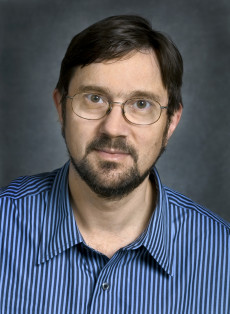Paxson's Internet Research Earns "Test of Time" Award
November 3, 2006
Working in the fast-paced field of Internet research, Vern Paxson of CRD’s Distributed Systems Department has won the inaugural Test of Time Award from the Special Interest Group on Data Communications (SIGCOMM) of the Association for Computing Machinery (ACM).
The new award, announced in the current issue of Computer Communication Review (CCR), recognizes research from 10 to 12 years ago that marked a milestone in its field and continues to provide insight today.
SIGCOMM recognized Paxson for his 1996 paper developing a measurement methodology to effectively collect and assess the performance of the Internet, even though the data came from stations sitting at the edge—instead of the center—of the network.
A CCR editorial about the award noted that Paxson carried out his research at a time when measuring the network’s performance had become increasingly difficult for scientists. The growing number of competing Internet service providers and privacy worries had created roadblocks for researchers interested in accessing data about the network’s core.
It was in this context that Paxson was pursuing his Ph.D. dissertation research at U.C. Berkeley while working as a member of the Lab’s Network Research Group (NRG). His overall topic was “What sort of performance do Internet transfers achieve, and why?” To address this question in a sound fashion required judicious application of the right tools, including the tcpdump and traceroute utilities developed by NRG’s Van Jacobson (and now ubiquitously employed in network measurement) and Wolff’s PASTA principle for how to conduct a series of measurements in order to estimate average properties in an unbiased manner, Paxson gathered and produced meaningful analysis of 40,000 route measurements conducted in a “mesh” across 37 Internet sites. The work, published in the annual SIGCOMM conference in a paper titled “End-to-End Routing Behavior in the Internet,” sought to answer questions about the network’s stability, symmetry, infrastructure failures, temporary outages, and routing pathologies.
Of his award, Paxson said, “It’s a delight for the work to be recognized in this fashion. In some ways, the whole effort was born out of desperation: it was clear to me that if I tried to conduct my measurements just from Berkeley to a few other places, there was no way I could honestly say I had a view of how the Internet actually works in general. Out of this concern emerged the idea of conducting measurements from many different locations -- much easier said than done! And once I conducted and analyzed the measurements, they proved very sobering in terms of just how varied the network performance experienced at different locations ranged. But it was also thrilling to finally obtain a sort of ‘big picture’ view that had been elusive until then. To this end, I am very grateful to the many volunteers who helped facilitate my measurements; and particularly to Van Jacobson, the head of NRG at the time, and my NRG colleague Sally Floyd, who were both instrumental to the success of the entire effort.”
The work yielded surprising results and common themes, one of which was the wide range of routing behavior observed by various sites. In his paper, Paxson wrote that the findings confirmed the belief that there is no “typical” Internet site or path. “But we believe the scope of our measurements gives us a solid understanding of the breadth of behavior we might expect to encounter—and how, from an end-point’s view, routing in the Internet actually works.” A subsequent journal version of the paper published in 1997 in IEEE/ACM Transactions on Networking was awarded the IEEE Communications Society William R. Bennett Prize Paper Award.
Paxson’s research ignited a renewed interest in network measurement study and contributed a few years later to his co-founding of the ACM Internet Measurement Conference. Paxson also concurrently developed Bro, an open source, UNIX-based network intrusion detection system. Used continuously at Berkeley Lab since 1996, Bro monitors and analyzes the network traffic to detect and block malicious activity.
You can find out more about what Paxson uncovered in his 1996 research at http://www.sigcomm.org/ccr/drupal/files/p43-paxson.pdf.
About Berkeley Lab
Founded in 1931 on the belief that the biggest scientific challenges are best addressed by teams, Lawrence Berkeley National Laboratory and its scientists have been recognized with 16 Nobel Prizes. Today, Berkeley Lab researchers develop sustainable energy and environmental solutions, create useful new materials, advance the frontiers of computing, and probe the mysteries of life, matter, and the universe. Scientists from around the world rely on the Lab’s facilities for their own discovery science. Berkeley Lab is a multiprogram national laboratory, managed by the University of California for the U.S. Department of Energy’s Office of Science.
DOE’s Office of Science is the single largest supporter of basic research in the physical sciences in the United States, and is working to address some of the most pressing challenges of our time. For more information, please visit energy.gov/science.










